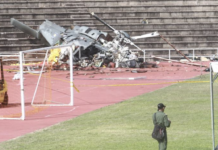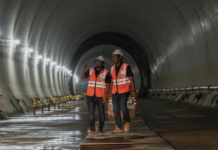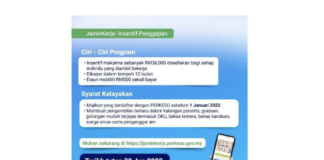KUALA LUMPUR, Sept 22 –A total of RM593 million has been spent on emergency procurement of additional hospital equipment for COVID-19 treatment over the past two years, the Dewan Rakyat was told today.
Health Minister Khairy Jamaluddin said the procurements made in 2020 and this year (2021) had been distributed to health facilities nationwide.
“The equipment include regular patient beds, Intensive Care Unit (ICU) patient beds, ventilators, ultrasounds, body freezers, containers and oxygen cylinders and they do no include contributions in equipment received from abroad worth RM148 million,” he said in response to a question from Datuk Abdullah Sani Abdul Hamid (PH-Kapar).
Abdullah Sani wanted to know the capability of equipment at government hospitals used to treat COVID-19 patients.
Khairy said apart from providing additional hospital equipment, the Health Ministry had also set up the National Rapid Response Task Force’ so that health workers could be mobilised to states with high cases such as Penang, Kedah and Sabah.
Khairy said so far, a total of 223 health workers had been sent to Penang, 156 to Kedah and 102 people to Sabah to ensure proper handling of critical and to avoid burn-out among health providers.
To a supplementary question from Abdullah Sani’s on whether the Health Ministry would will set up a permanent hospital for COVID-19 treatment, Khairiy said for the moment, the ministry will maintain the hospitals that have been converted to full COVID-19 hospitals in states nationwide.
“But, we hope with the drop in cases, more hybrid hospitals, where part of the wards are taken over for COVID-19 treatment, can be turned into regular hospitals,” he said.
According to the website covid-19.moh.gov.my, there are 100 hospitals providing COVID-19 treatment nationwide with eight of them being full COVID-19 hospitals, while the rest are hybrid hospitals
Meanwhile, Khairy said the Health Ministry was currently in the process of setting up more Virtual COVID-19 Assessment Centre (VCAC) to reduce congestion at existing centres.
He said with more VCACs, patients who had submitted their COVID-19 result reports, but were in category 1 or 2 and with no symptoms, would stay at home and be monitored virtually.
“Only patients with symptoms need to be present for evaluation and then will be sent either to the PKRC (COVID-19 Quarantine and Treatment Centre) or to the hospital for treatment,” he said.
Khairy also said CACs in states with controlled infections have also started shifting to ‘walk ins’ to avoid congestion.
He said, there are 209 CACs nationwide and the number would change according to the needs of a district from time to time.



















